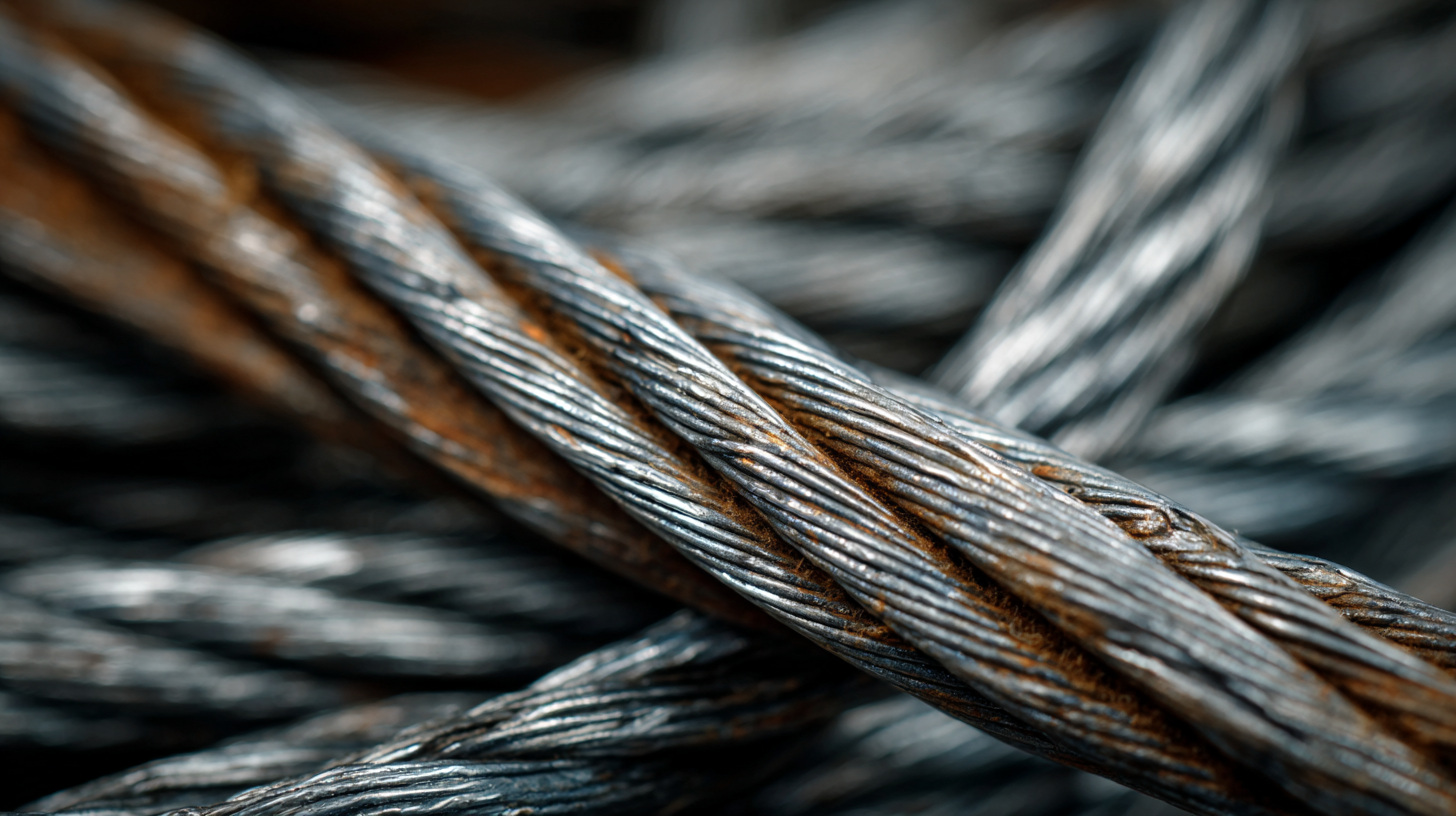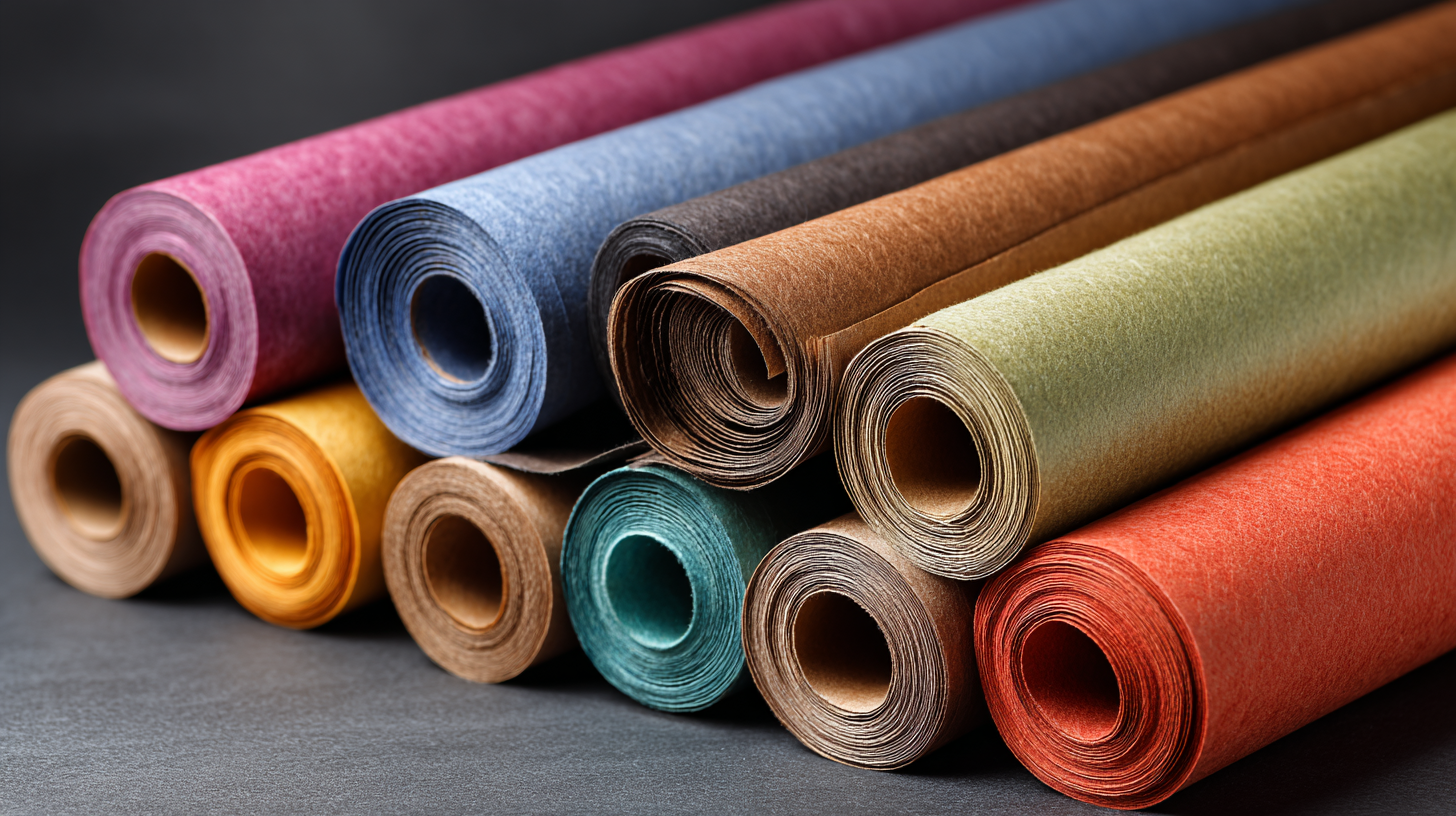Leave Your Message
-
Phone
-
E-mail
-
Whatsapp
In the ever-evolving world of electrical engineering and manufacturing, the significance of specialized materials continues to rise. One such material gaining attention is Paper Covered Wire, a unique product revered for its insulating properties and versatility. This guide delves into the myriad applications of Paper Covered Wire, highlighting how its distinctive characteristics make it ideal for various industries, including automotive, aerospace, and consumer electronics.

As we explore the topic, we will uncover the historical context and advancements that have shaped the production and use of Paper Covered Wire. We will also take a closer look at current industry trends, including the increasing demand for eco-friendly materials and technological innovations that enhance performance. With a comprehensive understanding of Paper Covered Wire and its applications, readers will be equipped to harness its potential effectively in their respective fields. Join us as we present the "Top 5" applications that are driving the future of this remarkable material.
Paper covered wire is distinguished by its unique insulating properties and environmental resilience. This type of wire typically consists of a copper or aluminum core encased in layers of paper, which can be treated with various coatings to enhance durability and performance. The primary characteristic that sets paper covered wire apart is its ability to maintain electrical conductivity while providing excellent thermal and moisture resistance. This makes it particularly suitable for applications in environments where traditional insulation might fail.
Industry reports indicate that the global market for paper covered wire is experiencing noteworthy growth, driven by increased demand in sectors such as automotive and electrical engineering. According to a recent market analysis, the paper covered wire market is projected to grow at a CAGR of 5.2% over the next five years. Additionally, ongoing advancements in wire manufacturing technologies parallel emerging trends in wire arc additive manufacturing (WAAM), as industries look for innovative ways to improve the quality and efficiency of their wire products. These developments not only enhance the mechanical properties of the wires but also contribute to reducing defects and improving overall product reliability.
 Paper covered wire is increasingly recognized for its unique properties and applications across various industries. One of the primary sectors benefiting from this type of wire is the electrical and electronics industry. According to a recent report by the Global Market Insights, the global market for paper covered wire is expected to reach $1.5 billion by 2026, driven by its excellent insulation properties and environmental sustainability. This wire is mainly used in transformers, motors, and other electrical components where efficient heat dissipation and high electrical insulation are crucial.
Paper covered wire is increasingly recognized for its unique properties and applications across various industries. One of the primary sectors benefiting from this type of wire is the electrical and electronics industry. According to a recent report by the Global Market Insights, the global market for paper covered wire is expected to reach $1.5 billion by 2026, driven by its excellent insulation properties and environmental sustainability. This wire is mainly used in transformers, motors, and other electrical components where efficient heat dissipation and high electrical insulation are crucial.
Another significant application of paper covered wire is in the automotive industry. With the rise of electric vehicles, there is a growing demand for materials that provide both reliability and efficiency. A report from Allied Market Research indicates that the electric vehicle market is projected to witness a growth rate of over 22% annually through 2030. This growth will likely increase the demand for paper covered wire in electric motor applications, where its lightweight nature and high thermal resistance can significantly enhance performance. Additionally, the versatility of paper covered wire makes it suitable for use in high-frequency communication equipment, where signal integrity is paramount. The expanding scope of these applications highlights the ongoing trends in the use of paper covered wire across diverse industries.
The usage of paper covered wire is significantly influenced by current industry trends that promote sustainability and eco-friendliness. As various sectors lean towards greener materials, the paper covered wire market witnesses an upward trajectory. This adaptability to eco-sensitive applications not only caters to a growing demand for sustainable products but also positions manufacturers favorably against stringent regulations aimed at reducing plastic and other harmful materials in industrial applications.
Tips for choosing paper covered wire:
1. Assess the specific application requirements—ensure that the wire’s thermal and electrical properties align with your needs.
2. Consider the environmental impact of your selection; opting for paper covered wire can contribute to sustainability goals while maintaining product performance.
Alongside environmental factors, technological advancements shape paper covered wire's applications. Innovations in manufacturing processes and materials science enhance the durability and efficiency of paper covered wires, making them a preferred choice in various industries including electronics and automotive. As companies strive to incorporate advanced solutions into their offerings, understanding these capabilities makes it easier to leverage paper covered wire effectively.
Tips for utilizing paper covered wire:
1. Stay informed about the latest developments in wire technology to identify potential enhancements for your projects.
2. Consult with industry experts to determine the best practices for installation and maintenance, ensuring optimal performance.
When evaluating the various types of wire used in industrial applications, paper covered wire stands out for its unique characteristics compared to other wire types, such as plastic-coated wire ropes. Paper-covered wires provide excellent electrical insulation and are favored in applications requiring high flexibility and resistance to high temperatures. In contrast, plastic-coated wire ropes, which come in various coating types like PVC, PE, and PP, are more suited for applications where moisture and corrosion resistance are critical. The differences in coatings can notably influence the wire's performance depending on the environment it's exposed to.

Moreover, a comparative analysis of the stiffness characteristics of these wires reveals significant variations in their mechanical properties. The approaches for calculating axial, torsional, and bending stiffnesses differ for paper-covered wires and plastic-coated ropes. Paper-covered wires typically exhibit a more uniform stiffness across different loading conditions due to their construction and materials, while plastic-coated wire ropes may demonstrate varying stiffness properties based on the coating material and wire composition. Understanding these differences not only helps in selecting the right wire type for specific applications but also informs design choices in engineering projects involving cable systems.
The landscape of paper covered wire is evolving rapidly, with significant innovations and developments shaping its future prospects. As industries seek environmentally friendly alternatives, the demand for paper covered wire continues to rise. This material, known for its mechanical strength and insulation properties, is now being enhanced through new manufacturing techniques, making it even more resilient and versatile for various applications in electronics, automotive wiring, and renewable energy sectors.
Tip: When selecting paper covered wire for your projects, consider the specific requirements of your application, such as temperature resistance and tensile strength. Opt for manufacturers that provide detailed specifications to ensure optimal performance.
In addition to its traditional uses, advancements in coating technology are leading to new possibilities. Researchers are exploring biodegradable coatings that improve the wire’s performance while minimizing environmental impact. This shift aligns with broader industry trends towards sustainability, allowing organizations to meet regulatory standards and customer expectations for greener products.
Tip: Stay informed about the latest innovations in paper covered wire by following industry publications and attending trade shows. Engaging with experts in the field can also help you stay ahead of emerging trends and technologies.
